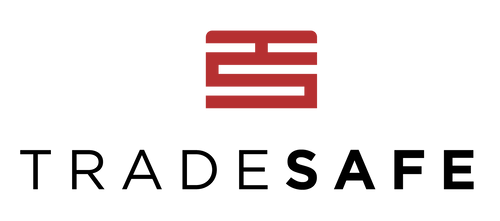
Workplace injuries tend to pile up in the same cities, year after year, often in the same industries. Understanding where and why this happens is key to improving safety protocols and protecting workers.
Using data from OSHA's Injury Tracking Application and population-adjusted figures, this study maps injury trends across U.S. cities and sectors. What we found highlights the urgent need for better safety practices in some of the country's busiest and most hazardous work environments.
Key Takeaways
- The cities with the most reported workplace injuries are Chicago, Illinois (14,154 injuries), Las Vegas, Nevada (12,293), and Houston, Texas (11,764).
- The 10 largest cities in the U.S. have a total of 93,256 workplace injuries.
- Beware: The industries with the most injuries per 100 employees are Public Administration (4.15 injuries), Transportation and Warehousing (4.02), and Arts, Entertainment, and Recreation (2.79).
America's Injury Hotspots: Big Cities, Bigger Risks
Some cities stand out for how often workers get hurt, and it's not always for the reasons you'd expect. From industrial hubs to growing suburbs, certain locations consistently report high numbers of workplace injuries.
Big cities may bring opportunity, but they also carry a higher risk for workplace injury. Chicago led the nation with 14,154 reported workplace injuries in 2024, followed closely by Las Vegas with 12,293 and Houston with 11,764. These numbers reflect not just population size but also industrial concentration and urban infrastructure challenges.
When the numbers are totaled, the 10 largest U.S. cities collectively reported over 93,000 injuries. High worker density, heavy equipment usage, and fast-paced operations likely all contribute to the elevated figures.
However, smaller cities aren't off the hook. When injuries are calculated per 100 employees, Norwalk, California; Deltona, Florida; and Maricopa, Arizona, emerged as the most hazardous. These findings suggest that even communities with smaller populations face disproportionate risks, possibly due to limited safety oversight, older infrastructure, or concentrated industrial operations.
In smaller communities, a handful of serious incidents can dramatically raise per-capita injury rates, revealing vulnerabilities that raw totals in larger cities may obscure. Limited budgets for safety inspections, fewer training resources, and reliance on older facilities often mean risks accumulate unchecked. At the same time, concentrated local industries can amplify the effect of each injury. This shows that smaller cities may actually face more fragile safety ecosystems, where even one oversight can affect widely through the workforce.
Industry Breakdown: Who's Getting Hurt, and Where?
Injury rates also shift dramatically depending on the kind of work people do. Some sectors see high injury totals due to their sheer size, while others have the highest risk per worker.
Some industries stand out for how often their workers get hurt and how many workers get hurt in total. The Transportation and Warehousing sector had the highest injury likelihood, with 71% of companies reporting at least one workplace injury. This points to systemic hazards in logistics-heavy jobs, including vehicle operation, heavy lifting, and fast-paced sorting environments.
While not the most injury-prone per worker, Healthcare and Social Assistance recorded the most total injuries at 318,078. With massive employment numbers, especially in hospitals and elder care facilities, even routine tasks can lead to high injury volumes (especially in high-pressure or understaffed environments).
When measured by injuries per 100 employees, Public Administration (4.15), Transportation and Warehousing (4.02), and Arts, Entertainment, and Recreation (2.79) topped the list. These figures highlight the importance of context. Some jobs might not involve machinery, but can still be physically or psychologically demanding enough to result in frequent injuries.
For example, Public Administration covers physically demanding and high-stress jobs where injury risk is an unavoidable part of daily duties. Similarly, Arts, Entertainment, and Recreation includes jobs where repetitive strain, heavy lifting, or even unpredictable interactions with the public can quickly escalate into injuries. These insights show that risk is not confined to “traditional” industrial jobs but extends into fields that might appear safer on the surface.
Conclusion: Staying Vigilant in a Risky Landscape
The data makes one thing clear: injury risk isn't evenly spread. It concentrates in major cities and hits certain industries harder than others. But these aren't just numbers. They represent real people facing avoidable hazards on the job. Whether you're running a logistics hub in Houston or a small construction team in Maricopa, prioritizing safety protocols, training, and compliance is the only way to push these numbers in the right direction.
Methodology
For this study, we leveraged the Occupational Safety and Health Administration's Injury Tracking Application Data from 2024 to determine which cities are workplace injury hotspots and the industries reporting the highest rate of injuries. During data collection, we analyzed injury data by zip code and then merged it into cities. We filtered out cities with less than 90,000 residents. Each city's population estimate was based on the included zip code populations.
About TRADESAFE
TRADESAFE provides industry-leading safety solutions - including Lockout Tagout devices, safety showers, eye wash stations, spill containment solutions, and workplace safety signs - precision-engineered for durability, compliance, and seamless integration into industrial environments. Designed to exceed OSHA, ANSI, and EPA standards, our solutions are relied upon by the nation’s top companies, municipalities, and government agencies.
Fair Use Statement
If you'd like to share or reference this study, you're welcome to do so for noncommercial purposes. Just be sure to credit TRADESAFE with a link back to this page.
